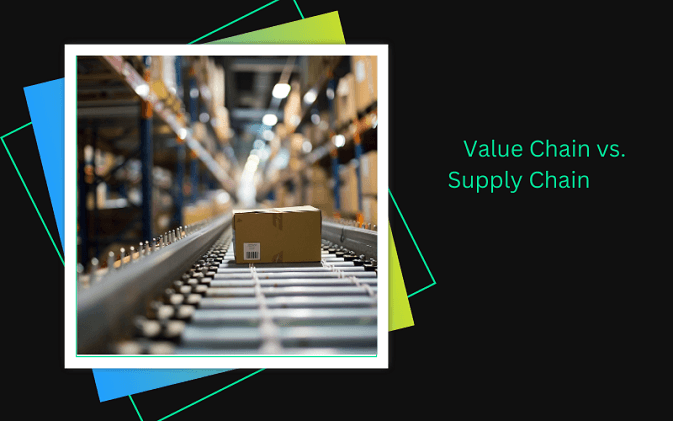Supply Chain vs Value Chain Explained: Key Differences & Business Impact

Why Understanding These Chains Matters
In the world of business operations, the terms “supply chain” and “value chain” are often used interchangeably, but they refer to different concepts. Understanding the key differences between these two chains is essential for any company looking to streamline its processes, optimize costs, and deliver better value to customers. Distinguishing between a supply chain and a value chain is crucial because it allows businesses to improve both their internal and external operations. Visit Procurementnation.com for all the information on supply chain management. In this post, we will review the differences between the two and explore their impact on business strategy and performance.
What is a Supply Chain?
A supply chain refers to the entire process of creating and distributing a product, from sourcing raw materials to delivering the final product to customers. It focuses primarily on the movement and logistics of goods. At its core, a supply chain is concerned with obtaining resources, managing inventory, manufacturing products, and ensuring that they reach the right destination on time and at the right cost.
Example: Consider a smartphone. The supply chain begins with the procurement of raw materials like metals and plastics, continues with manufacturing components (like chips and screens), and ends with the final assembly of the phone and its delivery to retailers or customers.
What is a Value Chain?
A value chain represents the series of activities that businesses perform to add value to their products or services, ultimately creating a competitive advantage. Unlike the supply chain, which focuses more on logistics, the value chain emphasizes the internal operations of a business and how each step contributes to enhancing the product’s value.
Michael Porter’s Value Chain concept splits the activities into primary and support activities. Primary activities include inbound logistics, operations, and marketing, while support activities consist of HR management, technology development, and procurement. Each step adds value and helps the company differentiate its product or service in the marketplace.
Key Components of the Supply Chain
The supply chain consists of several key components that ensure the smooth movement of goods from raw materials to finished products. These include:
- Suppliers: Provide the raw materials or components needed for manufacturing.
- Logistics: Responsible for transportation and storage of goods.
- Inventory: Managing stock levels to meet demand without overstocking.
- Manufacturing: Transforming raw materials into finished goods.
- Distribution: Getting products from manufacturers to customers.
Each element is interconnected, and efficiency at every stage of the supply chain directly impacts the cost and timeliness of delivery.
Key Components of the Value Chain
A value chain is made up of primary and support activities that contribute to value creation:
Primary Activities:
- Inbound Logistics: Receiving and storing raw materials.
- Operations: Transforming raw materials into finished products.
- Outbound Logistics: Distribution of finished products to customers.
- Marketing & Sales: Promoting the product and ensuring customer demand.
- Services: Post-sale services like customer support.
Support Activities:
- Human Resources: Recruiting, training, and managing staff.
- Technology Development: Innovation and product development.
- Procurement: Acquiring the resources needed for primary activities.
- Firm Infrastructure: The company’s overall management and organizational structure.
Supply Chain vs Value Chain: What’s the Difference?
To understand the differences between the two chains, let’s break them down into key aspects:
| Aspect | Supply Chain | Value Chain |
| Focus | Logistics and movement of goods | Internal processes that add value to products |
| Goal | Efficiency and cost reduction | Creating competitive advantage through value addition |
| Scope | External (from suppliers to customers) | Internal (within the company) |
| Activities | Sourcing, manufacturing, distribution | Inbound logistics, operations, marketing, services |
| Impact | Cost efficiency, timely delivery | Product differentiation, customer satisfaction |
How They Interact in a Business Setting
While both chains focus on different aspects of business operations, they are not isolated. The supply chain and value chain complement each other in the sense that the efficiency of the supply chain can influence the effectiveness of the value chain, and vice versa. For instance, a strong supply chain ensures timely delivery of materials that can enhance the value chain’s ability to offer superior products. At the same time, optimizing the value chain by adding value at each step ensures that products from the supply chain are more attractive and competitive in the market.
Impact on Business Strategy and Performance
Both the supply chain and value chain play pivotal roles in shaping business strategies. By understanding how to optimize both, businesses can:
- Improve efficiency: Streamlining processes in both chains reduces costs and increases operational efficiency.
- Boost profitability: Adding value through the value chain can justify higher pricing, while optimizing the supply chain can cut costs.
- Enhance customer satisfaction: A well-managed value chain ensures better product quality and customer service, which increases loyalty and brand reputation.
Real-World Examples
- Amazon: Amazon’s supply chain is renowned for its efficiency, ensuring fast delivery of products worldwide. At the same time, its value chain is focused on customer-centric services like Prime, customer support, and innovation in technology that adds significant value to the products they deliver.
- Apple: Apple’s supply chain is highly optimized for sourcing quality components and assembling products quickly. However, its value chain is what sets it apart—Apple focuses on design, innovation, and user experience, which adds substantial value and justifies a premium price.
How to Optimize Your Supply and Value Chains
To optimize both chains, businesses should:
- Leverage Technology: Use ERP systems and automation to improve efficiency in the supply chain and enhance product development in the value chain.
- Focus on Collaboration: Strong partnerships with suppliers and other stakeholders are crucial for both chains.
- Data-Driven Decisions: Use analytics to track performance and identify areas for improvement in both the supply and value chains.
Aligning Both Chains for Long-Term Success
If you want to know about value chain strategies, visit procurementnation.com. To achieve sustained growth and success, businesses must align their supply chain and value chain strategies. While the supply chain ensures that products are delivered efficiently, the value chain ensures that these products meet customer expectations and offer greater value. Together, they form the backbone of a successful business model. By optimizing both, companies can not only improve their operational performance but also provide exceptional value to customers, creating a lasting competitive advantage.



